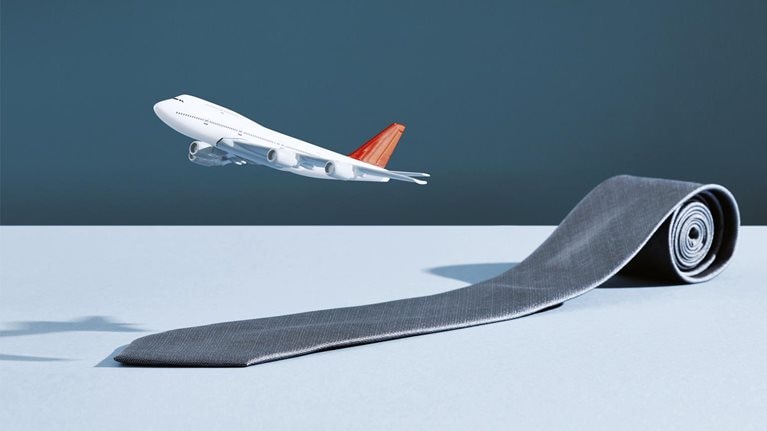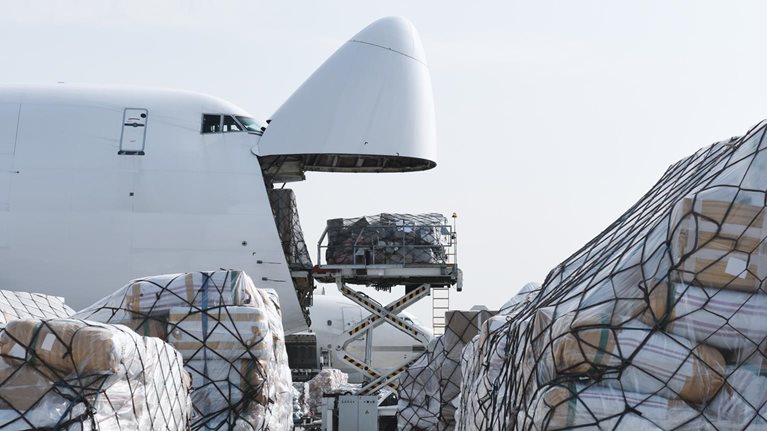The airline industry has failed to earn its cost of capital in every year of its existence. But in the few years preceding the COVID-19 pandemic, something began to change. Despite the industry’s overall weak performance, a small group of airlines managed to create shareholder value.
Five power curves—which plot out the economic performance of individual airlines relative to one another—show that from 2012 to 2019, a small group of airlines managed to generate shareholder value (Exhibit 1). This group includes airlines from multiple regions and with a range of sizes and business models. What do these airlines have in common?

Image description:
Five power curves , one for each year (2001, 2008, 2015, 2019, 2020), showing the distribution of profits of airline carriers sampled in the specified year. Distribution shows that while more airlines are losing value from 2015, a small number of airlines have managed to generate profits. Source: McKinsey analysis
End of image description.
To find answers, we analyzed a large number of variables to seek patterns in top performers. We also interviewed industry leaders.
Six secrets emerged. As carriers set out to reenvision themselves and plan for a comeback from the pandemic, taking these lessons on board could set them up for future economic success.
Secret one: High-performing airlines effectively manage their capital base, especially aircraft
ROIC is the best metric of value creation. Most airlines focus on increasing the numerator, which is profit. However, an often overlooked way is by managing the denominator, or capital base, wisely. In our analysis, capital turnover, or the revenue earned per dollar invested in capital, is correlated with better ROIC performance (Exhibit 2).

Image description:
Scatter plot chart shows capital turnover in 2019, which is calculated by dividing revenue by invested capital, of sampled airlines on the x-axis and ROIC in 2019 on the y-axis. The ROIC excludes goodwill, after taxes. A positive correlation can be seen where higher capital turnover is correlated with higher ROIC performance. Source: McKinsey analysis
End of image description.
A narrow-body aircraft generates a higher capital turnover than a wide-body plane because of cost and usage. A narrow-body Boeing 737-800 is three to four times cheaper than a wide-body aircraft such as the 777-300ER. Because a narrow-body aircraft is deployed on shorter flights, it can complete five or six flights per day compared with one or two trips for wide-body aircraft.
Regardless of aircraft type, airlines that buy newer, more expensive aircraft will have to manage the large weight on their balance sheets by maximizing utilization. Ideally, new planes should be in the air for ten to 12 hours a day for narrow bodies and 14 to 15 hours a day for wide bodies.
If airport regulations permit, airlines could complement such flight activity with the potential deployment of depreciated aircraft, especially on popular routes. Airlines that do this may capture revenue peaks while lowering asset costs. As capital assets, airplanes are subject to depreciation. However, if an aircraft is properly serviced and maintained, there’s no correlation shown between its age and safety. One low-cost carrier, for example, separates its aircraft internally into two subfleets. The new, efficient modern fleet flies more than 12 hours, on average, every day. The older fleet, with significantly lower ownership costs, flies when there’s sufficient demand at the right yields.
Secret two: High-performing airlines know that conduct matters more than market structure
Our analysis has shown that airlines based in slow-growing home markets outperform their peers in high-growth markets (Exhibit 3). Fast-growing markets attract many new entrants. As new planes are rapidly added in anticipation of demand growth, ticket prices fall. The Asian market, which is the lowest-performing region, is a case in point. Before the pandemic, the Asian market became less consolidated, and stiff competition has badly bruised many of the airlines there.

Image long description: Data in chart:
| By CAGR of home market passenger growth | Average ROIC of airlines |
|---|---|
| 2–4%, | 7.9% |
| 4–6% | 4.6% |
| 6+% | 3.5% |
Horizontal bar chart of three bars showing average ROIC of airlines on the x-axis, categorized on the y-axis by compound annual growth rate (CAGR) of home market passenger growth. Data indicate airlines operating in slower-growing markets tend to do better. Source: International Air Transport Association Market Intelligence Services; McKinsey analysis End of image description.
On the flip side, US airlines have fared better, due in part to mergers leading to a more consolidated market. However, market structure isn’t the only factor. Latin America, too, saw a similar consolidation, but airlines there failed to return their cost of capital. This shows that airline conduct is the more critical factor (Exhibit 4). US carriers were careful to add capacity at a slower rate than GDP growth and only on routes where they already had enjoyed a competitive advantage.

Image long description: Data in chart:
| Region | Conduct: Capacity growth vs. GDP growth | Structure: Share of seats of top 5 carriers in 2019 | Performance: Average operating margin 2017–19Ç, |
|---|---|---|---|
| United States | 0.4 | 85.4% | 7.0% |
| South America | 2.7 | 81.6% | 3.2% |
| Europe | 2.1 | 63.8% | 3.2% |
Three sets of data are shown that reflect airline conduct, industry structure, and airline performance for the US, South America, and Europe. A bar chart displays conduct and industry structure metrics, and performance metrics are displayed in a list. The data indicate that conduct, defined as capacity growth versus GDP growth, matters more than industry structure when it comes to performance. Source: Cirium Diio Mi; International Air Transport Association; International Civil Aviation Organization; Oxford Economics
End of image description.
This should be good news for airlines. After all, whether a carrier is in a fast- or slow-growing market is beyond its control. Even airlines in rapidly expanding markets can improve returns by reassessing capacity addition. While explicit capacity control with other industry players is forbidden by antitrust regulation in most markets, airlines should be able to model how their capacity additions would likely affect returns.
Secret three: High-performing airlines give customers choice through ancillaries
Ancillaries are an undertapped channel of value for many airlines. Our analysis reveals a mildly positive relationship between ancillary sales performance and ROIC. Carriers whose passengers each spend at least $20 on ancillaries generate 8.2 percent ROIC on average, which is more than five percentage points higher than it is for airlines whose passengers spend less than $5 on ancillaries.
Before the pandemic, airlines generated around $110 billion in revenues from the sales of ancillary products, which is about $67 billion more than the industry’s absolute operating profits of around $43 billion. Margins for ancillaries are generally high and without them, many airlines would fail to return their cost of capital.
Both passengers and airlines benefit when airlines unbundle priority services and expand their range of ancillaries. With more options, customers enjoy greater control of their travel experience. They are less price sensitive for the add-ons they want compared with base fares. Thus, ancillaries are a way to delight passengers by offering additional or unexpected value, for instance, by auctioning off otherwise empty business class seats before a flight.
Airlines may offer price-sensitive passengers a low base fare to give them a great sense of value, and then entice them with a range of add-ons. In economy class, for example, many high-performing airlines are actively innovating new ancillaries and selling them at the right moment in the customer’s journey. Aisle seats, premium meals, reserving overhead space, and private-car transfers at the point of destination are just a few examples. Think broadly.
Secret four: High-performing airlines create pockets of privilege in their flight network
When it comes to origin-and-destination (O&D) pairs, an airline enjoys privilege when it’s able to provide passengers with a unique itinerary that others don’t. Every carrier’s network of flights has some privilege. Successful airlines are able to identify, create, and monetize niches in their flight network (Exhibit 5).

Image long description: Data in chart:
| Average ROIC of airlines | Average ROIC of airlines |
|---|---|
| 0-20% | 5.2% |
| 20-50% | 5.1% |
| 50-80% | 8.3% |
Horizontal bar chart of three bars showing average ROIC of airlines on the x-axis, categorized on the y-axis by degree of network privilege. Data indicate carriers with greater network privilege tend to perform better.
End of image description.
Panama’s Copa Airlines, a consistent value creator, provides an excellent example. Its fleet of narrow-body aircraft serves more than 80 destinations across North and Latin America, offering thousands of O&D pairs. For example, if a traveler is going from Chicago to Rosario, Argentina, Copa has the only reasonable one-stop connection. The percentage of Copa’s passengers who travel on its privileged O&Ds is three times the industry average.
As airlines bring back flights, decision makers could analyze their network privilege to capture more value. Usually, this can be achieved by serving smaller, secondary and tertiary cities and connecting the flights through large-scale hubs. There may be potential to deploy longer-range, fuel-efficient aircraft such as Airbus A321neos or Boeing B787s to experiment with new destinations. They should be careful of adding too much capacity too quickly.
Secret five: High-performing airlines differentiate themselves by their reputations
Customers no longer buy tickets solely based on price and schedule. They fly more frequently and are more knowledgeable about the differences between airlines, including their product offerings and operational performance. More are booking directly on the airline’s own website based on reviews they’ve read.
Even when customers engage intermediaries, such as online travel agencies (OTA), they’re exposed to much richer information. Five years ago, most OTAs showed only flight prices and schedules. Today, it’s common to find seat details, on-time performance for the flight, Wi-Fi availability, seat maps, customer review scores, and even environmental impact on OTAs.
Thus, it’s crucial for airlines to build a positive reputation by keeping standards up. Our analysis shows that carriers that are reliably on time and have good operational performance enjoy higher returns. Investments in reliability—as well as innovation in the onboard product—can have revenue upsides. Delta, for example, has a yield advantage among its peers and enjoys high customer satisfaction partly because the carrier leads in on-time performance and has the lowest cancellation rates.
Having developed a quality product, the next step is to get passengers excited about the journey. The best airlines effectively wield the tools they have at their disposal to engage with customers directly and establish themselves as trusted brands: loyalty schemes, online sales, and mobile apps.
Secret six: High-performing airlines are great organizations, too
We can, to an extent, quantify an airline’s performance when it embodies the five secrets above. What explains the rest? From our experience, the last ingredient is organizational health. Healthy companies have a highly skilled and motivated workforce. Employees have clear objectives and feel recognized for their work. Decision making is swift and fact based, and departments work seamlessly with one another.
We ran McKinsey’s proprietary Organizational Health Index at a dozen carriers globally. On average, airlines are unhealthy organizations compared with other sectors, with 75 percent of carriers falling below the global median score. There’s a clear correlation between value creators and companies with strong organizational health (Exhibit 6). Improving the status quo could lead to better ROIC.

Image description:
Scatter plot chart shows the Organizational Health Index score on the x-axis and ROIC in 2019, which excludes goodwill, after taxes, on the y-axis. Distribution of data indicate healthier airlines perform better. Source: McKinsey analysis
End of image description.
All companies could work on improving their organizational health. Our research has found that most airlines have the potential to greatly enhance the quality of their leadership with a strong strategic vision that is communicated to all levels of the organization. Employees across ranks in healthy organizations internalize their company’s values and purpose, which drives decision making across all functions, including external engagements with other partners, communities, and authorities.
Demand for air travel is coming back, and projections see a return to prepandemic levels of traffic by 2023 or 2024. As airlines restructure and reenvision themselves for the future, they can learn from the past. These six secrets of value creation could empower them to generate value for both passengers and investors in the postpandemic world.


